1976
Kawasaki KZ900 | Motorcycle Review
The
Z900 Family
The year 1967
was awash in monumental events. Summer of
Love bromides aside, the image of Hendrix
immolating his Strat at Monterey is a
visual time stamp of a convulsive year.
Change and upheaval, among other things,
were in the air.
In the world
of motorcycle design, a revolution began
gestating under the radar that would rumble
the cycle culture like a stack of 100-watt
Marshall amps. Sam Tanegashima, Kawasaki's
double-naught engineer, began work on the
cryptically designated “New York Steak”
project. Tanegashima's mission was to craft
a visionary super-cruiser, a powerful bike
that would ease comfortably through urban
traffic, yet be capable of grinding
pavement into grit on the open road. The Z1
was to be an indomitable Goliath before
which all others would wither, a “King
Motorcycle”, in the words of Kawasaki.
The New York
Steak project labored through '67 and into
'68, designing a four-stroke, four-cylinder
engine. While Kawasaki was known primarily
as a two-stroke manufacturer that had done
quite well with its performance-oriented
two-strokes, tightening EPA regulations
hung over that technology like an inversion
layer. In 1963, Kawasaki had acquired
Japan's oldest motorcycle works, the Meguro
factory, whose four-stroke production
ability helped put the ambitious N.Y. Steak
plans on Kawasaki's front burner.
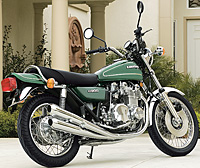 The
road to innovation is a perilous one, and
for a while it looked as though Kawasaki's
revolution would not be televised. In
October 1968, Honda dropped a four-cylinder
bomb of its own at the Tokyo Motor Show,
the knockout CB750KO, beating Kawasaki to
the punch. As Honda's October Surprise was
being unveiled across the Pacific, the
rudimentary mock up of the twin-cam Z1 sat
in Sam Tanegashima's West Coast studio
apartment. A Teletype issued the dire news,
“…drastic review on our product inevitable.”
(Click image to enlarge)
The
road to innovation is a perilous one, and
for a while it looked as though Kawasaki's
revolution would not be televised. In
October 1968, Honda dropped a four-cylinder
bomb of its own at the Tokyo Motor Show,
the knockout CB750KO, beating Kawasaki to
the punch. As Honda's October Surprise was
being unveiled across the Pacific, the
rudimentary mock up of the twin-cam Z1 sat
in Sam Tanegashima's West Coast studio
apartment. A Teletype issued the dire news,
“…drastic review on our product inevitable.”
(Click image to enlarge)
Dazed, but
not confused, by Honda's suckerpunch,
Kawasaki regrouped and assembled a design
team in April 1970 to focus on the
redeveloped Z1. While seeking to avoid
also-ran status in the wake of the CB's
ambush, Kawasaki held fast to the Z1's
basic constitution. The bike would remain a
four cylinder and employ a disc brake. The
bike would handle well and be emissions
friendly. Most importantly, the Z1 would
eat the CB750 alive and floss with its
spokes.
In early
1972, test bikes were sent to the U.S. for
the express purpose of being beaten within
an inch of their lives by a ballsy gang of
Kawasaki leathernecks, and beat them they
did. Post-mayhem teardowns at Kawasaki's
California outpost revealed the Z1 was good
to go. Kawasaki's reinvigorated efforts
were about to pay off.
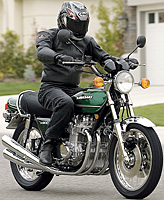 Euro-spec
dual discs grace the front wheel. (Click
image to enlarge)
Euro-spec
dual discs grace the front wheel. (Click
image to enlarge)
In 1973, the new kid on the block was a
903cc menace to society that would scatter
street football games and send sidewalk
surfers diving off clay wheels into hedges.
With brutish, swooping lines and quad pipes
clutching a magnificent engine like a black
heart in an iron fist, the Z1 was an
archetype of menacing style. Natty in its
distinctive candy tone brown/orange color
scheme, the big Kawasaki looked like a
heavyweight boxer out for a night on the
town in a root beer suit.
The impact
was immediate. The big Z won hearts and
minds in the press and on the street.
Nothing like it had ever been seen before.
Kawasaki began rolling Zs off the line at
rate of 1,500 per month. At $1,895 ($8,400
in today's dollars), they disappeared so
fast that even Kawasaki employees couldn't
bag them through the employee discount
program. Sales surpassed the CB750, whose
conservative styling had begun to grow grey
at the temples by 1973. There wasn't much
else in the way of competition for the Z1.
No other bike came close to the power,
reliability and brute style offered by the
world's newly reigning superbike. The Z1's
introduction would retune Kawasaki's image
from a producer of smoke-belching
two-stroke triples to a builder of muscular,
sophisticated four-stroke motorcycles. The
Zed was the alpha bike and the road lay
open before it.
Upright
was the sport standard in 1976
The focus of
the adulation heaped on the Z1 was the
mouthwatering 66mm x 66mm 903cc engine. If
reasonable men can describe a block of
metal and chrome pipes as sexy, the Z's
powerplant was a dual-cam Raquel Welch.
With black-finished castings, polished side
covers and chrome accents, the Z's motor
was unlike anything previously seen on a
production bike. The engine leans eagerly
forward into the downward sweep of the
beefy exhaust pipes to create room for the
quartet of Mikuni carburetors mounted
behind. Kawasaki's designers were insistent
that the engine look impressive from the
Z1's inception. Their exertions to that end
paid off handsomely. Big and wide, the
motor was designed to accomplish a lot with
little effort. On that count, as well, it
was a success. The Steak's double overhead
camshafts push the protein directly to the
valve stems without meddlesome rockers or
pushrods getting in the way. The original
Z1 engine put out 82 hp @ 8,500 rpm, which
it was capable of sustaining over long
stretches without roasting the innards.
This was in an era when 50 horses was a
considerable stable. Kawasaki realized that
while most American riders might not ever
use that much brawn, they wanted to know it
was available.
The Z1 went
through minor permutations through the
ensuing years. In '74, the Z1 was
rechristened the Z1B. The update featured
crank balance alterations to add a layer of
smooth, while ignition and jetting
alterations improved off-idle response.
Cosmetically, the B featured the
now-familiar striped paint scheme and
abandoned the black cylinder block and head
in favor of a polished alloy gleam. The '75
Z1B's song remained the same, save for a
blue or burgundy based color striping. That
year, the Z1-P was conscripted into service
by law enforcement, as many well-ticketed
veterans would surely like to forget. The
original generation of Z bikes ended in
1975.
The next year,
Kawasaki retagged the bike KZ900, and while
it was much the same machine as its Z1
predacessors, the bicentennial edition
featured some modest changes. Tuning
alterations and smaller carbs shaved a few
watts off the powerplant in an effort to
refine the bike's raw grunt, but riding a
KZ900 today precipitates a case of
adult-onset deja vroom.
Timeless
refined excellence
This bottle
green KZ, beautifully restored and upgraded
by Redline Cycle Service of Skokie,
Illinois, is deceptively quiet, producing a
spirited rustle at idle. The raised bars
and stepped saddle, combined with a long,
low-slung tank, give the rider the
impression of being perched atop the bike,
rather than settling down into it. The
classic angled clocks are easily read, and
while the KZ is outfitted with the standard
array of idiot lights, the alarming red
“STOP” lamp that glows brightly whenever
the brakes are used might have modern
riders threatening to yank some cables.
Pulling away from the curb, there's a
little engine hiccup without a good handful
of the rangy throttle—a throttle that
requires a full turn and a half of the
wrist from the non-double-jointed to fully
open the four mouths. The clutch and gear
changes are agreeably smooth, but the
occasional false neutral will plague those
not sure of foot.
Just as
intended, the KZ900 engine burbles smoothly
through traffic in the 3,000 rpm range
without much gear changing, although the
occasional downshift will goose the bike
along nicely. Revs rise and fall slowly,
and at 72 hp (10 fewer than the '73 Z1) the
KZ900 is sufficiently powerful, without
being overwhelming. Today's rider might
find the engine and CV carbs a bit sluggish,
but considering the 30-year-old technology
through the prism of history, it was
remarkable for it's time—so remarkable in
fact that the 1976 KZ900 wrangled “best
roadster in its class” honors from Cycle
World magazine at the time.
If the KZ is
a low-torque Jekyll in the city, getting it
out of town unleashes its inner Hyde. The
bike redlines at 10,500 rpm, but the beast
doesn't truly sprout fur until about 6,000.
Running the bike up the rev ladder will
complete the flashback sequence in the
rider's mind. The engine opens up with
familiar punch and that unmistakable
burbling exhaust note creeps up from behind.
The bike is
nicely balanced and, when outfitted with
modern bias-belted Bridgestone rubber,
won't flop into corners, nor is it
reluctant to lean in to turns. Occasionally,
road undulations will induce the Z's
well-documented high-speed wobble. Likewise,
if you push it hard enough, you can grind
the center stand, though overall ground
clearance is usually adequate. As it did
back in the day, top gear doesn't seem as
tall as it should; when cruising, you'll
possibly find yourself reaching for a
phantom overdrive. The rubberized foot pegs
are properly positioned and help damp the
already-acceptable amount of engine
vibration. The KZ, big for its day, doesn't
feel particularly heavy or cumbersome in
comparison to modern bikes. Overall
handling and rideability are remarkably
obliging, a nod to the Z designers' intent
to build a large, powerful bike that
handled well. The Euro-style double disc
front brakes (an option here in the States)
have ample bite and feel. Likewise, the
progressive rear drum lever has an
abundance of travel but inspires confidence
when you put your foot down.
The KZ900 was
the last of the Z900 breed. In '77,
Kawasaki boosted the displacement to
1015cc, increased the weight, and further
civilized the bike. The '76 KZ900, like a
bottle-green Polaroid, certainly is
time-specific. So, if you are looking for a
two-wheeled way-back machine capable of
quiet wayfaring one minute and pavement
unraveling acceleration the next, slip a
hairbrush in the back pocket of your flares,
snap on your puka shells and dig up your
Frampton Comes Alive!
eight-track...actually, this is a Z. Better
make it the Ramones.
Источник:
kawasaki_kz900

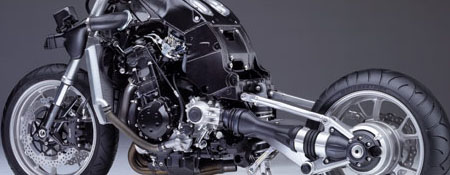



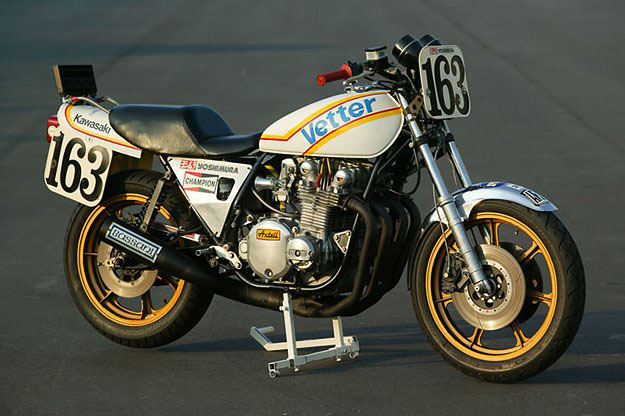

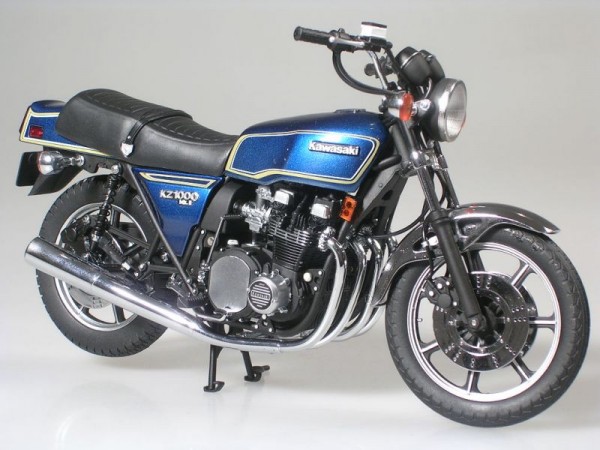
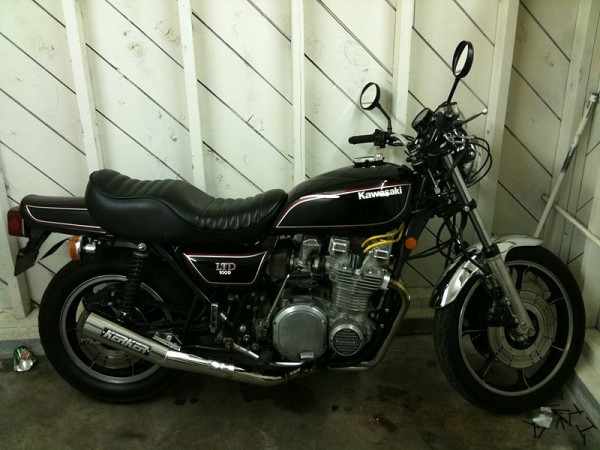
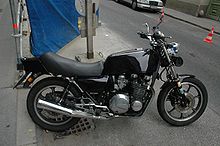
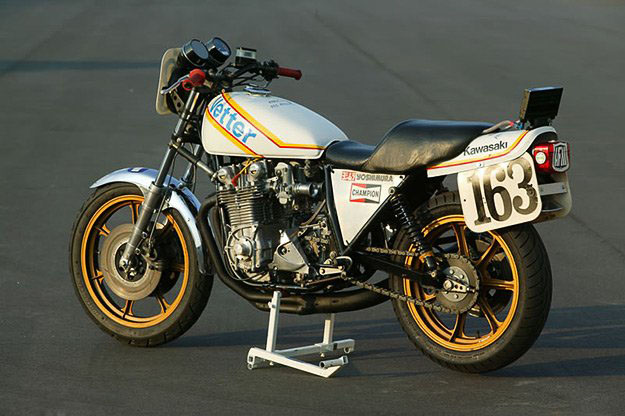

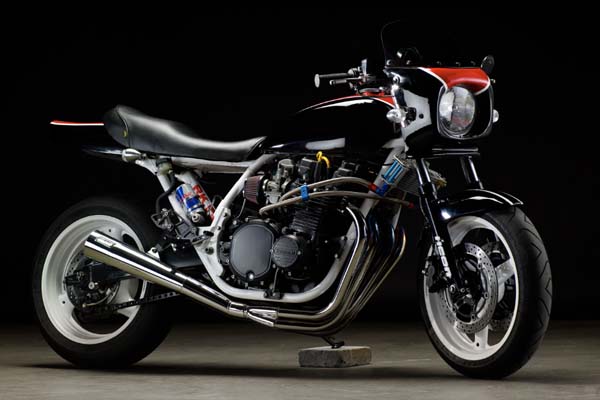
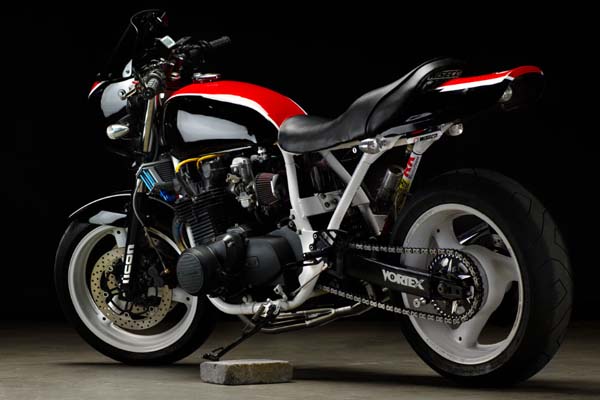
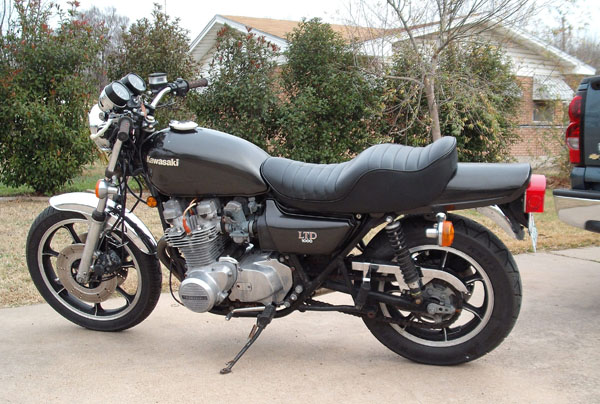


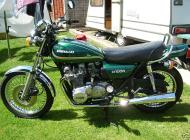
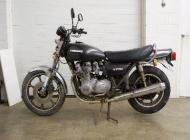


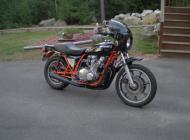

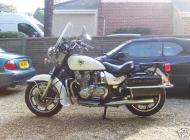
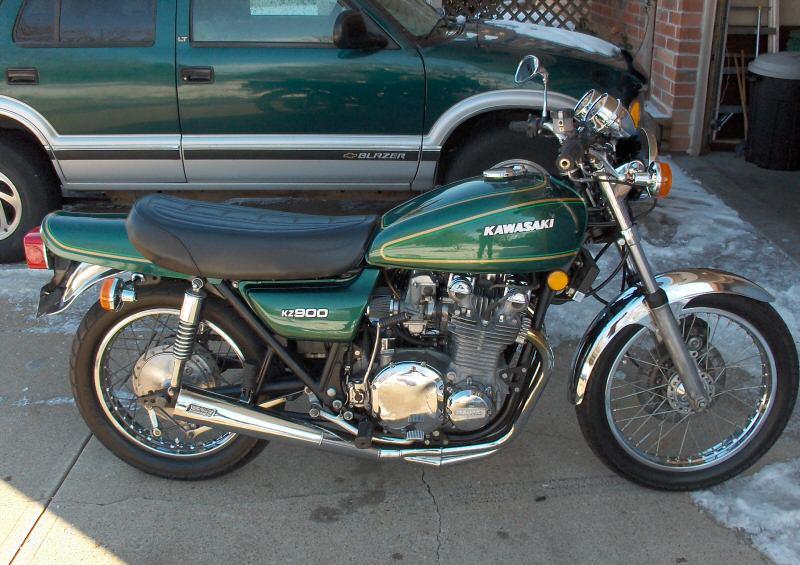
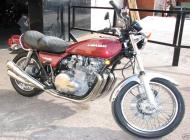



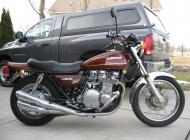




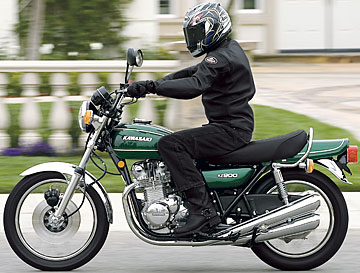

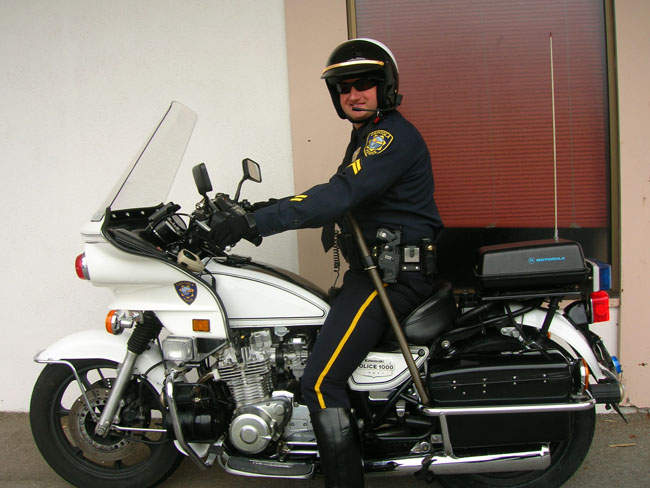
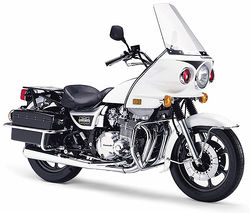
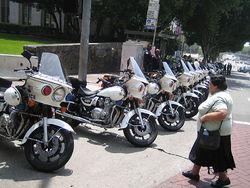

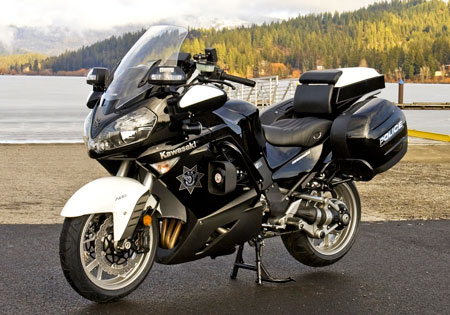 Можно
понять желание полицейских обладать самыми тяжелыми и габаритными
мотоциклами, ведь именно так - своим величием и грандиозностью и устрашают
потенциальных нарушителей законопорядка. Для каждого мотоциклиста наличие "мотобата"
на дороге является неким знаком того, что здесь можно делать, а что уже
нельзя. А погони и перехваты - это случается очень редко, и не дай Бог, чтобы
за свой срок службы мотоцикл хоть раз выслужит на все "100".
Можно
понять желание полицейских обладать самыми тяжелыми и габаритными
мотоциклами, ведь именно так - своим величием и грандиозностью и устрашают
потенциальных нарушителей законопорядка. Для каждого мотоциклиста наличие "мотобата"
на дороге является неким знаком того, что здесь можно делать, а что уже
нельзя. А погони и перехваты - это случается очень редко, и не дай Бог, чтобы
за свой срок службы мотоцикл хоть раз выслужит на все "100".